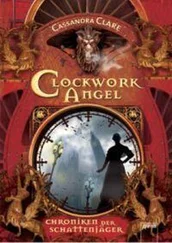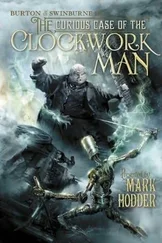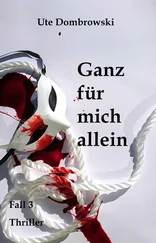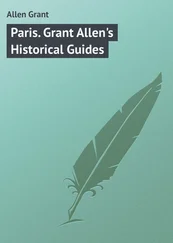C.S. MacCath’s fiction and poetry have appeared or are forthcoming in The Pagan Anthology of Short Fiction , PanGaia , newWitch , Murky Depths , Mythic Delirium and Goblin Fruit , among others. She says, “For me, ‘Akhila, Divided’ speaks to the idea that injustice and suffering often have far-reaching consequences and that some of these are the perpetuation of injustice and suffering. It also speaks to the idea that despite our best efforts, some wounds don’t heal, so we are well-advised to be careful with one another.” You can find her on the Internet at www.csmaccath.com.
Joanna Galbraith was born in Australia in 1972. She now lives in Switzerland with her partner, Damien, where she spends her time writing stories, teaching English and eating cheese fondue. Her stories have been published in The Writers Post Journal , Wanderings and on www.writelink.co.uk. She says the idea for “The Moon-Keeper’s Friend” first came to her while sitting on a broken-down bus in Ghana, West Africa. Unable to get off (as this would have involved climbing over an entire bus load of goats, chickens and women in spectacular Sunday garb) she passed the countless hours watching “Mohammed Topkapi’s Twenty-Four Hour Tea Service” through the cracks of the bus window. Housed in an adobe mud hut with a beautiful domed roof, painted ultramarine blue and adorned in small, yellow stars, it struck her as the sort of place that someone as foreign as herself (and perhaps even the moon) might feel at home in. She dedicates this story to Ambrose.
Deborah Biancotti lives and works in Sydney, Australia. Her first published story won the Aurealis Award for Best Horror Short Story. More recently, her work has appeared in the Years Best Australian SF & Fantasy and the Australian Dark Fantasy & Horror anthologies. She confesses, “‘The Tailor of Time’ came when I was post-operative, healing at home, and suddenly unable to tell night from day. It occurred to me then how hard I’d been working lately—working day to night, as the saying goes. I felt lonely, and a long way from my childhood, and so the idea of a Tailor who could stitch time together became attractive to my feverish imagination.” Keep an eye out for her upcoming work with Twelfth Planet and Gilgamesh Press. Deborah can be found online at http://deborahb.livejournal.comand http://deborahbiancotti.net.
Erin Hoffman is a writer, game designer, and wandering philomath. It is her solemn duty to protect the world from the machinations of two cantankerous parrots while paying the bills as a video game consultant and freelance essayist. Her nonfiction can be found primarily at The Escapist , and links to her fiction can be found at philomathgames.comand on the shared weblog Homeless Moon ( homelessmoon.com).
Erin tells us, “I’m very fascinated with the idea of taking modern trials—things we talk about now that would have been anathema or poorly understood in ‘romance’ eras frequently emulated by fantasy—in allegorical terms. ‘Root and Vein’ is about staying pliant, staying alive, after heartbreak, and how we learn from it, even when our every instinct is to shut down against pain; it’s kind of an anti-happily-ever-after, being about walking away from something that hurts you. It is also a reflection of my fascination with trees as living records of their experiences—abundant summers, harsh winters—as are we all, but trees display this on their very skins.”
Mike Allen writes, “As editor, I enjoy stories that experiment, that push the envelope, that dazzle with their daring, but I’m often personally frustrated when such stories end without feeling complete, without leaving any emotional crater for me to remember them by. At the same time, I find myself increasingly bored with the traditional competently-assembled Good Story Well Told. For better or for worse, I conceived of Clockwork Phoenix as a place where the two schools can mingle and achieve Happy Medium; where there is significance to both the tale that’s told and the style of the telling.
“My previous anthology projects, Mythic and Mythic 2 ( Mythic Delirium Books, 2006) contained some of this same strangeness, but those projects had constrictions on subject matter that I found somewhat limiting. Despite the whimsical introduction I’ve written just to go about things a little differently Clockwork Phoenix is not meant to signify a literal clockpunk mythology, but rather a place where unexpected things juxtapose.”
He is also the long-time editor of the poetry journal Mythic Delirium and the co-editor of The Alchemy of Stars: Rhysling Award Winners Showcase (SFPA, 2005). Mike is himself a three-time winner of the Rhysling Award for speculative poetry, and his newest poetry collection, The Journey to Kailash , has just come out in hardcover and trade paperback from Norilana Books. His website is www.descentintolight.com.


AFTERWORD
for the digital edition
I hope you’ve enjoyed this electronic edition of Clockwork Phoenix: Tales of Beauty and Strangeness . My gratitude goes out to those who gave me the inspiration and tools to create it: Vera Nazarian, Charles M. Saplak, Rose Lemberg, Elizabeth Campbell, Michael DeLuca of Weightless Booksand Erzebet YellowBoy Carr of Papaveria Press. And of course, my wife Anita, who guided the organization of these stories to emphasize their thematic links.
For the sake of expediency, and historical preservation, the biographies of the authors and your humble editor have been left as they were when this book was first published in trade paperback by Vera Nazarian’s Norilana Books in July 2008. However, much has happened in three years’ time. All of these writers have continued to blaze their own paths. Some have become editors of important publications. Some acquired major book deals, published new novels, were nominated for or even won major awards. I encourage you to click the links embedded in their bios to see what each one is up to now.
It occurred to me, too, that I should share a little about the bragging rights the Clockwork Phoenix crew of authors accumulated after this book came out. Vandana’s novelette was reprinted in David G. Hartwell and Kathryn Cramer’s The Year’s Best SF 14 , while Deborah’s “Tailor of Time” was a finalist for the 2008 Aurealis Award for Best Young Adult Short Story. Tanith’s and Laird’s short stories were included in the Locus Magazine 2008 Recommended Reading List, as was the anthology as a whole—and Laird later used “Occultation” as the title story of his 2010 collection which won the Shirley Jackson Award. Editor Ellen Datlow included David’s “Old Foss” in her massive anthology of feline-based speculative fiction, Tails of Wonder & Imagination . Tales by John Grant, Cat Rambo, Leah, Laird, Kathy Sedia, Cat Sparks, Tanith, Marie, Vandana, John Wright and C.S. MacCath received honorable mentions from various “best of the year” anthologies, and all of the stories received critical praise from some corner or other, though some reviewers mused as to whether my strange art-for-art’s-sake anthology construction actually worked.
Re-reading it now, I can’t imagine putting this book together any other way.
Читать дальше














